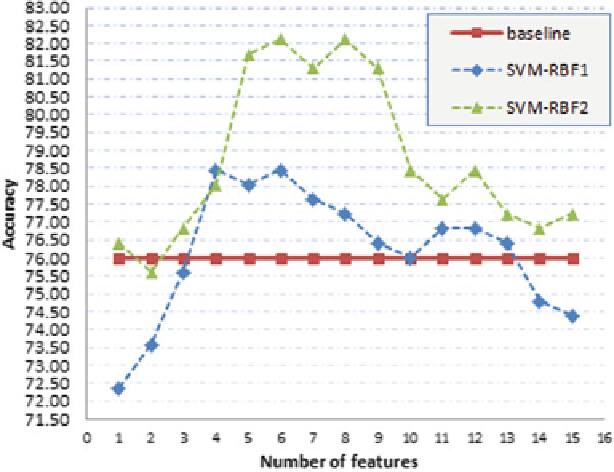Information Technology Reference
In-Depth Information
SVM selected model learns an optimal hyperplane that separates these classes. The
learned model can then be used to predict the label (category) to be attributed to an
unseen speech unit. In our experiments, the SVM model selected uses a radial basis
function (RBF) kernel which, as shown in previous works, is effective in similar
emotion classification tasks (Mower et al.
2011
).
The SVM model was initially trained considering only the 1,582 features that
openSMILE extracted from each unit. We used WEKA's implementation (Hall
et al.
2009
) of information gain (IG) and Pearson correlation (PC) to select the
N
most relevant to the task features (
N
D
1, 2, 3, 1,582). The feature selection
was performed on the whole training set. At a next level, we repeated the
same experiments using the additional abovementioned features (role, gender, and
duration). To distinguish among the two different sets of features used, the first
method using 1,582 features was indicated with SVM-RBF1, and the second one
using 1,585 features was named SVM-RBF2. Both methods use PC as a feature
selection method, since it performed slightly better than IG. A majority classifier
was used as baseline, i.e., a classifier that assigns the label that dominates in the
training set, the negative in our case, to all instances of the test set.
20.3.3
Results
The obtained classification results from the SVM-RBF1 and SVM-RBF2 procedure
are illustrated in cf. Fig.
20.3
.The
x
-axis indicates the number of the features

Search WWH ::

Custom Search